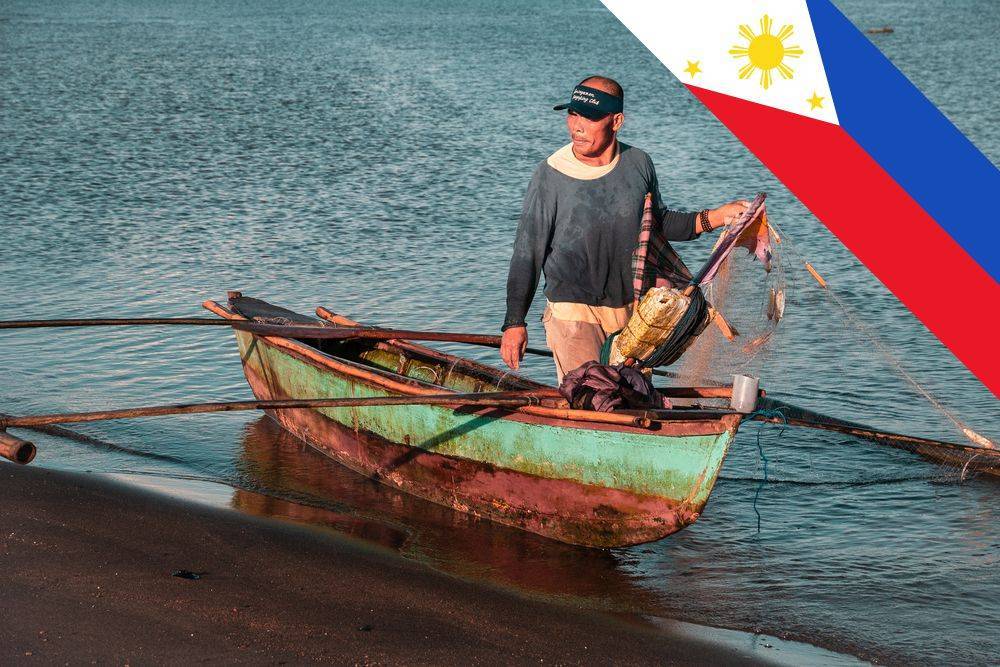Several areas in Cavite are to be impacted by an oil spill from MT Terranova, which sank off Lamao Point in Bataan.
The University of the Philippines Marine Science Institute (UP MSI) forecasted that the oil spill would reach Metro Manila by 1 am on Tuesday, 30 July, affecting Noveleta, Rosario, Tanza, Naic, and Ternate in Cavite.
Current Status and Observations
Despite the forecast, Philippine Coast Guard (PCG) Commandant Ronni Gil Gavan reported that there were no visible signs of the oil spill reaching Manila. “As of today… the sea is clear,” Gavan stated. He also reassured that the spill had not affected the South Traffic-Corregidor nor Bulacan. However, photographs taken during an operation by the PCG and the Department of Environment and Natural Resources Environmental Management Bureau (DENR-EMB) in Cavite suggested otherwise. The images, captured along the coast of Barangay Amaya 7 in Tanza, showed members of the crew with oil-stained gloves, indicating contamination in the area.
Cleanup Efforts and Ongoing Monitoring
Gavan acknowledged the presence of “pockets of oil sheen, very thin, in some areas”. He attributed these sightings to remnants of the initial spill. He noted that oil dispersants had been applied, mitigating the severity of the contamination. “There are small amounts that reached land, but I think let’s not magnify them as a serious cause for concern,” Gavan added. The PCG announced that syphoning operations would commence shortly following the successful closure of 14 leaking valves on the sunken vessel. An aerial survey conducted sought to confirm reports of oil sheen in various provinces.
In response, the Department of Health (DOH) has released safety guidelines to protect the public from potential health hazards. The spill occurred on 25 July. Subsequently, it has raised concerns about environmental and health risks, prompting the DOH to take precautionary measures.
Potential Health Risks and Symptoms
The DOH warned that exposure to oil and its chemical components could cause various health issues, particularly for residents in affected coastal areas. According to the DOH, skin contact with oil-contaminated water or sand can lead to skin irritation, rashes, and dermatitis. Additionally, inhalation of fumes from the oil spill can result in respiratory symptoms such as coughing, shortness of breath, and throat irritation.
The department highlighted that the volatile organic compounds (VOCs) present in the oil can cause dizziness, headaches, and nausea. Prolonged exposure to these compounds may have more severe health effects, especially for individuals with pre-existing respiratory conditions. They urged residents in affected areas to remain vigilant and avoid contact with contaminated materials whenever possible.
DOH Safety Guidelines for Affected Communities
To mitigate the risks, the DOH issued a set of safety guidelines for communities in the vicinity of the spill. Residents are advised to avoid direct contact with oil-contaminated water, sand, and debris. They emphasised the importance of wearing protective clothing, including gloves, long-sleeved shirts, and boots, when engaging in cleanup or coming into contact with contaminated materials.
The DOH also advised against swimming in affected waters and consuming seafood from contaminated areas. The department noted that seafood contaminated by the oil spill could pose significant health risks if ingested. They recommended that local governments and authorities ensure proper testing of seafood products before allowing them to enter the market.
Emphasis on Environmental and Health Safety
DOH emphasised the need for a comprehensive response to mitigate the impact of the spill. “We are committed to ensuring the safety and well-being of our communities,” the department stated. They urged local authorities and residents to adhere strictly to the safety guidelines and report any signs of contamination or health issues.
The DOH also called on the shipping company responsible to cooperate fully in the cleanup and remediation efforts. The department stressed the importance of transparency and accountability in addressing the incident.
As cleanup operations continue, the DOH remains vigilant in monitoring the situation and providing necessary support to affected areas. The public is encouraged to stay informed and follow official advisories to minimise health risks associated with the oil spill.
Have a pressing question for a doctor? Medical Channel Asia has launched a community forum page where you can get questions answered by a medical specialist. Visit the community forum here.

